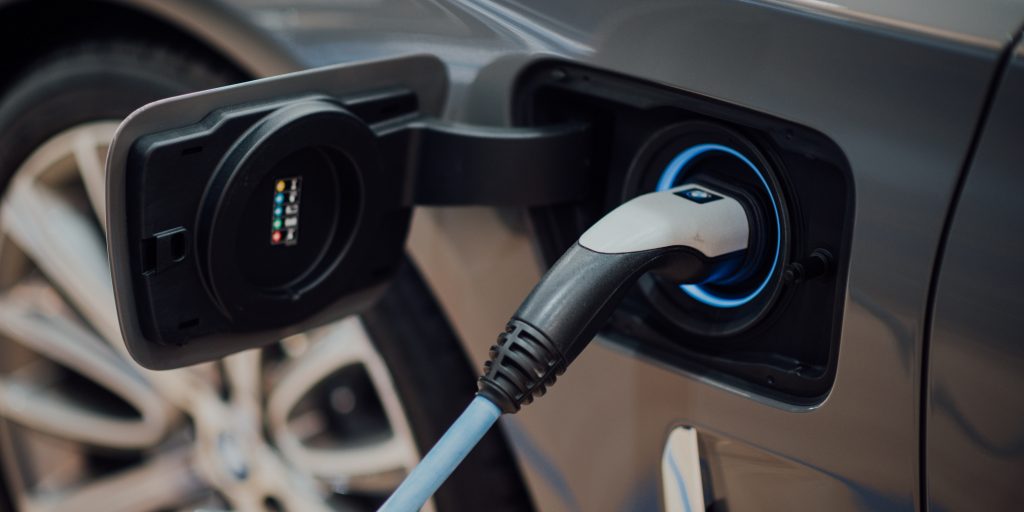Report: There’s an impending ‘tsunami’ of electric vehicles set to hit American roads and utilities should prepare
With global leaders meeting this week at a United Nations climate summit in Glasgow, Scotland, much media focus is centered on environmentally friendly solutions. With technology evolving quickly to meet increasingly strong political demands, an era marked by coal-fired plants and skylines smothered by smog is drawing to a close.
There’s no going back to the way things used to be. Cities and counties of the future will be built with clean energy—and public agencies need to be prepared to meet the fluctuating grid demands associated with those technological advancements.
“The wave of electrification is on the horizon,” notes a report issued this month by the United States Department of Energy on this transition to clean energy, particularly in the transportation sector. “With millions of personal and commercial electric vehicles (EVs) set to hit U.S. roads in the coming decade, that wave may be more like a tsunami. Merging the transportation and electricity sectors has the potential to fundamentally transform how customers fuel vehicles and how goods are transported across the country.”
The report, “An EV Future: Navigating the Transition,” was compiled by the federal energy department’s Office of Electricity Advanced Grid Research Division and the Office of Energy Efficiency and Renewable Energy’s Vehicle Technologies Office through 33 meetings with industry experts (66 hours total), including representatives from the American Public Power Association, a statement from the organization notes.
Among takeaways from those meetings, the power association’s statement highlights a “recognition that EV loads are mobile and unpredictable and, therefore, processes and regulations may need to evolve to respond to customer requirements. The participants also noted that social justice issues will require special attention as the country moves away from an early adopter phase.”
This impending electrification will require “hundreds of terawatts of power” across many different modalities—personal vehicle travel, freight and public transit, among others—the report notes. Further, the way in which electricity is provided will fundamentally shift: “providing electricity is no longer a one-way street. Information flow needs to be bidirectional. EVs and other emerging technologies are capable of interacting with the grid in a more symbiotic manner to maximize efficiency,” the report says.
While utilities have adapted to technological changes in the past, vehicular electrification poses a unique challenge because of its potential scale and the interdependency on “myriad stakeholders across the sectors.” From corporations to consumers, the technological evolution “will redefine relationships, introduce new partnerships, and require new thinking to tackle not only the technical challenges but the cultural, institutional and policy barriers that will arise,” the report says.
At the cusp of this transition, there are steps city and utility administrators can take (and many already are), the report continues. For example, utilities can build partnerships with community organizations and private businesses like car dealerships/manufacturers to brainstorm solutions and access technical information that would be helpful in building out public infrastructure. Architecture and building firms can “establish electric vehicle charging early in the design process. It can also facilitate a more collaborative process when proposing new building codes or mandates.”
Mandates and codes are an essential element in the preparation process; however, whatever is enacted now might have to be adapted down the road. Early adopters of emerging technologies are usually well-to-do, the report notes. But as electric vehicles become more affordable, the customer base will become more diverse. Given these discrepancies, plans and policies designed exclusively around those driving today’s electric vehicles “are likely to fail drivers from underserved, lower-income communities.”
Aiding in this, the report says that surveys, forecasting and planning—both now and as electric vehicles come online—will help utilities better understand and meet the needs of their community.
“Utilities need charge data to build accurate load profiles that will ensure sufficient capacity and system reliability. Lacking actual data, utilities must depend on calculations and projections,” the report says. These profiles can include an analysis of local business fleets, forecasts of EV usage, charging patterns and driver practices.
Communities can also take stock of grid infrastructure, some of which might not be able to handle future load requirements. On paper, charging vehicles at a residential scale might seem like something a grid can handle, “but aging infrastructure can be a limiting factor. Lower voltage conductors or older transformers that are still functional might not be able to accommodate additional load,” the report says—especially if an entire neighborhood decides to convert to electric vehicles.
If a residential cluster emerges or a corporation decides to convert its fleet to electric, “the transformer might not be capable of handling the additional load.”
In surveying community needs, the report suggests, among other things, that utility administrators “Do a ‘white roof survey’: Using Google Maps, locate transportation and distribution centers by their large, white rooftops. Check the airports: Many airports are now specifying zero-emission requirements as part of their tenant lease agreements. Utilities with major airports in their service territories may find fleets looking to electrify here. Join a trucking association: State trucking associations offer opportunities to network with local trucking industry leaders.”
For more information and to view the department of energy’s report in its entirety, visit bit.ly/2ZJDHHX.




















